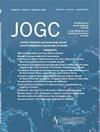延长第二产程时间与手术准时分娩:一项回顾性队列研究
IF 2
Q2 OBSTETRICS & GYNECOLOGY
引用次数: 0
摘要
目的分析延长第二阶段与不超过第二阶段对产妇结局的影响,以100%手术分娩为代价。方法对某大学附属教学医院2018 ~ 2020年的数据进行回顾性研究。在第二阶段合并一个单胎,活的,足月胎儿在头位表现。研究队列分为3组:1组,无产产妇,在2小时内(或3小时硬膜外)通过剖宫产或真空抽吸进行手术分娩(100%);第二组为无产产妇,试产时间超过2小时(或硬膜外分娩3小时);第三组,无产,2小时内自然阴道分娩(或3小时硬膜外分娩)。主要结局是产妇发病率的综合,包括以下至少1项:产后出血、感染(任何)、发热≥38°C、腹部器官损伤、肛门括约肌损伤、剖腹手术和产妇入住重症监护病房。结果1、2、3组共有1007例产妇入选,分别为215例、252例和540例。1、2、3组主要结局发生率分别为31例(14.4%)、62例(24.6%)、73例(13.5%)(P = 0.001)。在调整了人口统计学和产科变量后,2组的主要转归率仍显著高于1组(调整OR为1.86;95% CI 1.10-3.15, P = 0.021)和第3组(调整OR 1.62;95% ci 1.05-2.50, p = 0.029)。结论在无产妇女中,与缩短第二阶段分娩时间和100%手术分娩相比,延长第二阶段分娩时间2小时(或硬膜外分娩时间3小时)与产妇发病率增加有关。本文章由计算机程序翻译,如有差异,请以英文原文为准。
Extending the Time Limit of the Second Stage of Labour Versus Delivering on Time Operatively: A Retrospective Cohort Study
Objectives
To analyze the effect of extending the second stage on maternal outcomes compared to not exceeding the time at the expense of 100% operative delivery.
Methods
A retrospective study was conducted in a university teaching hospital on data between 2018 and 2020. Nulliparous with a singleton, viable, term fetus in a cephalic presentation at the second stage was incorporated. Study cohort was partitioned into 3 groups: group 1, nulliparous who delivered operatively (100%) by cesarean delivery or vacuum extraction within 2 hours (or 3 hours with epidural); group 2, nulliparous who proceeded with a trial of labour past 2 hours (or 3 hours with epidural); group 3, nulliparous who had a spontaneous vaginal delivery within 2 hours (or 3 hours with epidural). The primary outcome was a composite of maternal morbidities that included at least 1 of the followings: postpartum hemorrhage, infection (any), fever ≥38°C, abdominal organs injury, anal sphincter injury, relaparotomy, and maternal intensive care unit admission.
Results
Overall, 1007 nulliparous were eligible, 215, 252, and 540 in groups 1, 2, and 3 respectively. Incidence of the primary outcome was 31 (14.4%), 62 (24.6%), and 73 (13.5%) in groups 1, 2, and 3 respectively (P = 0.001). After adjusting for demographic and obstetric variables, the primary outcome rate remained significantly greater in group 2 compared to group 1 (adjusted OR 1.86; 95% CI 1.10–3.15, P = 0.021) and group 3 (adjusted OR 1.62; 95% CI 1.05–2.50, P = 0.029).
Conclusions
In nulliparous women, extending the second stage >2 hours (or >3 hours with epidural) was associated with increased maternal morbidity compared to a shortened second stage and 100% operative delivery.
求助全文
通过发布文献求助,成功后即可免费获取论文全文。
去求助
来源期刊

Journal of obstetrics and gynaecology Canada
OBSTETRICS & GYNECOLOGY-
CiteScore
3.30
自引率
5.60%
发文量
302
审稿时长
32 days
期刊介绍:
Journal of Obstetrics and Gynaecology Canada (JOGC) is Canada"s peer-reviewed journal of obstetrics, gynaecology, and women"s health. Each monthly issue contains original research articles, reviews, case reports, commentaries, and editorials on all aspects of reproductive health. JOGC is the original publication source of evidence-based clinical guidelines, committee opinions, and policy statements that derive from standing or ad hoc committees of the Society of Obstetricians and Gynaecologists of Canada. JOGC is included in the National Library of Medicine"s MEDLINE database, and abstracts from JOGC are accessible on PubMed.
 求助内容:
求助内容: 应助结果提醒方式:
应助结果提醒方式:


